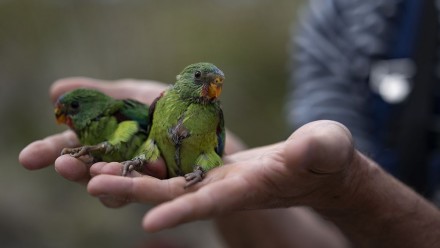How do shelterbelts affect soil biotic communities?
In South-eastern Australia, linear strips of planted trees and shrubs (shelterbelts) are frequently established to restore ecosystem services that have been altered due to agriculture. Despite their wide use, little is known about the effect of shelterbelts on soil biotic diversity and how they alter aboveground and belowground interactions. This study aims to: 1) understand how shelterbelts affect soil biotic communities and how time since establishment may drive soil community structure 2) explore aboveground - belowground linkages by investigating soil communities under dominate shelterbelt tree genera (Acacia and Eucalyptus). 3) explore how changes in dominate genera affect key ecosystem processes such as decomposition rates, microbial community structure and enzyme activities. Her research findings demonstrate that that the effects of agriculture are long-lasting, even after 17 years post-establishment of a shelterbelt and that maintaining a variety of tree species during afforestation may contribute to conserving important bacterial and fungal diversity in agricultural landscapes.
This event is free and open to the public.
About the speaker
Daniela Carnovale is undertaking a PhD at the Australian National University’s Fenner School of Environment looking at soil biota in revegetated landscapes. She has completed a Bachelor of Science (Resource and Environmental Management) with honours. Her honours project looked at the effect of the size of scattered trees on soil function. Prior to starting a PhD Daniela has had several years’ experience in plant/ soil science and has worked for CSIRO as a lab technician and the Murray Darling Basin Authority as a water quality project officer. She is currently working as an Environmental impact assessor at Australian Environment Agency assessing agricultural and industrial chemicals environmental impacts. The main objective of Daniela’s PhD is to study the effect of the reintroduction of woody native vegetation such as shelterbelts on the soil biotic community. For her PhD, she was supervised by Associate Professor Philip Gibbons, Dr John Field, Dr Peter Thrall, Dr Andrew Bissett and Dr Geoff Baker.










